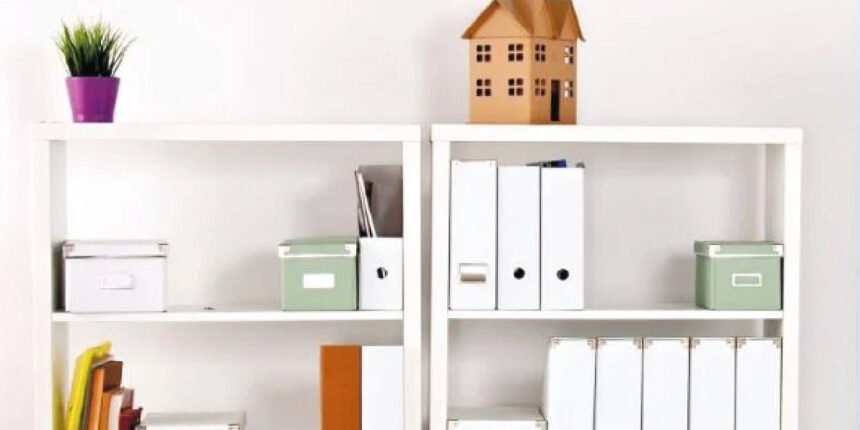Life is full of important paperwork—household records, IDs, health documents, tax files, and insurance policies—that we can’t afford to misplace. Yet, many homes lack a structured system for organizing these materials. That’s where a label printer, like a Dymo-compatible direct thermal printer, becomes a powerful ally.
By using clear, legible, and long-lasting labels, you can transform a drawer full of random papers into a reliable filing system that saves time, reduces stress, and adds peace of mind.
This article guides you through organizing your home documents—such as household records, household registration books, and insurance materials—using Dymo-compatible direct thermal labels.
Why Organize Home Documents with Dymo Labels?
Having a document organization system in place means:
- Faster access to vital paperwork
- Preparedness for emergencies
- Streamlined tax season and insurance claims
- Easier sharing of information with family members
And Dymo-compatible labels offer specific advantages:
- No ink required: Direct thermal technology makes printing cost-efficient
- Customizable label sizes: Fit everything from folders to index tabs
- Strong readability: Sharp, smudge-free text
- Compatible with multiple storage materials: Works on plastic, paper, metal, and file folders
Core Categories of Home Documents to Organize
Start by breaking down your paperwork into core categories. Typical document groups include:
- Family IDs and Certificates:
- Birth certificates, household registration (hukou), passports, Social Security cards
- Health and Medical Records:
- Vaccination cards, medical histories, dental records, prescriptions
- Insurance Policies:
- Life, health, auto, home, renters, and travel insurance
- Financial Documents:
- Tax returns, income statements, mortgage documents, investment records
- Legal Documents:
- Wills, power of attorney, marriage certificates, property deeds
- Education and Employment:
- Diplomas, transcripts, resumes, employment contracts
- Emergency Contacts and Reference Info:
- Family contact list, local emergency services, utility account info
Step-by-Step: Setting Up a Labeling System for Home Documents
Step 1: Gather and Sort All Paperwork
Start by collecting all loose documents into one area. Use labeled envelopes or file folders to create temporary categories.
Step 2: Choose Your Label Sizes
Select label sizes appropriate for each storage type:
- Large labels for binder spines or storage boxes
- Medium labels for folder tabs, document sleeves, or envelopes
- Small labels for color tabs or subcategories
Recommended formats like 30321 or 30256 work well for most home document needs.
Step 3: Print Clear, Descriptive Labels
Use concise but specific label titles. Example labels include:
- “Health Records – John”
- “Home Insurance – Active”
- “Hukou Book – Original Copy”
- “Tax Returns – 2022–2024”
Include date ranges or status (e.g., Active, Archived) for clarity.
Step 4: Apply Labels to Organizers
Label folders, envelopes, accordion files, or binders. Apply labels on the front and spine for easier visibility in drawers or shelves.
Step 5: Store by Access Level
Separate:
- Frequently used files (e.g., IDs, insurance) in an accessible drawer or desktop organizer
- Rarely used but important files (e.g., property deeds, diplomas) in fireproof or locked storage
Use Case Examples
Household Registration and ID Documents
Use durable, clearly labeled folders for passports, household registration books, and birth certificates. Include sub-labels like “Kids – IDs” or “Copies – For Travel.”
Insurance Policies
Group insurance documents by type:
- Health Insurance
- Life Insurance
- Car Insurance
- Claims History
Mark expired or canceled policies with “Archived” labels.
Tax and Financial Records
Label each year’s tax return file. Include supplemental folders like:
- W-2/1099 Forms
- Charitable Donations
- Medical Deductions
Medical Records
Label by family member. Use subfolders for:
- Vaccination cards
- Surgery or allergy history
- Insurance Explanation of Benefits (EOBs)
Emergency Grab Folder
Create a portable, clearly labeled file with copies of IDs, insurance cards, emergency contacts, and medical alerts. In case of disaster, it’s ready to go.
Making It Family-Friendly
Use Color Coding
Assign a color to each family member or document category using color labels or label holders.
Add Icons or Emojis
Use visual markers for kids or those with reading difficulties:
- ? Home documents
- ? Medical
- ? Auto
- ? Taxes
Teach the System
Walk family members through how the files are organized. Keep a laminated label legend near your filing cabinet.
Benefits of a Labeled Home Filing System
- Reduced Stress During Emergencies: Know where everything is when seconds matter.
- Faster Claims Processing: Submit the right documents without delay.
- Time Savings: No more searching through random drawers.
- Family Readiness: Anyone in the household can access what they need.
- Professional Presentation: For appointments or legal reviews, labeled documents show preparedness.
Best Practices for Label Longevity
- Use waterproof labels for anything stored in basements or garages
- Avoid sunlight on labeled binders to prevent fading
- Choose removable labels for files that change frequently
- Reprint annually to update year-based folders
FAQs
Q1: Can I use Dymo-compatible labels on all types of folders and surfaces?
Yes, direct thermal labels adhere well to most file folders, plastic sleeves, and paper envelopes. For textured or delicate surfaces, test before full application.
Q2: What’s the best way to organize both physical and digital copies?
Use physical labels for hard copies and add QR codes or reference numbers that link to digital folders on cloud storage.
Q3: How can I keep the labels updated when files change?
Use removable labels for dynamic categories. Alternatively, use label holders or clear sleeves that allow label inserts to be swapped out easily.
Looking for a dependable label solution for your home filing system? Betckey offers a wide range of Dymo-compatible direct thermal labels that make document organization simple, clear, and efficient. Whether you’re managing tax files or emergency contacts, Betckey labels help you stay ready and stress-free.







